As if you really needed more motivation…
While large cities like Tokyo and Osaka certainly have their own appeal, the Japanese countryside is really something special all on its own. Forests, lakes, waterfalls, and beaches…Japan has it all, and almost every inch of its rural land is breathtakingly beautiful.
There is one aspect of the lovely Japanese countryside that is part man-made, however: “satoyama” (里山). The word literally means mountain (山, やま) village (里, さと), but it’s much more than that. Satoyama refers to farmlands that are built on the base of a mountain or on the edge of mountain forests.
Satoyama include crop fields as well as forests of trees cultivated for lumber and firewood, but the first thing that comes to mind when we think of satoyama is rice paddies. Green land divided into perfect sections, with mountains rising in the background, is one of the most quintessential scenes of the Japanese countryside.
The neat lines of the rice paddies combined with the wild nature of the forested mountains behind them is a feature unique to satoyama. Of course, terraced rice paddies are also included.
Mt. Fuji is an excellent area to find satoyama, because the majesty of the mountain makes them very picturesque. Mt. Fuji is already gorgeous, but when it’s reflected in the water of a rice paddy, its beauty is doubled, so it’s a popular spot for photographers.
おはようございます。今朝は里山の水田で燃えるような朝焼けに出会えました! pic.twitter.com/4tvA320TSn
— Taitan (@taitan21) May 20, 2018
The carving of vegetable fields into mountainsides, not just rice paddies and not just at the base of mountains, is another kind of satoyama. These are amazing not only for their beauty but also for the mere fact that they were created and are maintained on the side of a mountain.
One key to the beauty of satoyama is the verdure of the crops. Japanese farms typically grow green plants like cabbage, potatoes, eggplants, and, of course, rice, as opposed to browner crops like wheat (though there are also wheat farms in Japan). This makes the farmland look like an extension of the mountain, and that could be why the Japanese countryside seems so lush for most of the year.
The old-style farm buildings that dot the farmlands could also be considered part of the visual charm of satoyama. Though the term itself refers mostly to landscaping, viewers can still appreciate the addition of these quaint, man-made features amidst the green of the fields.
But the thing that makes satoyama really special to Japanese people is that they don’t just sit on the border of the mountains; they work together with them in the name of biodiversity. Rice paddies are home to many insects and amphibians, who serve as sustenance for birds, and the cultivated mountain-base forests are host to a variety of plant and animal life. They’re an important ecological asset to the country, and that is what differentiates satoyama as a unique kind of farmland.
Given the cultural and ecological importance of satoyama and Japan’s reverence for nature in general, it’s no surprise that they have also been deliberately drawn into the scenery of many anime. My Neighbor Totoro, for example, is set in a colorful and detailed rendering of a satoyama northwest of Tokyo, which left a lasting impression in many viewers’ hearts and minds.
https://www.instagram.com/p/BjWeAu8HYyd/?tagged=%E3%83%88%E3%83%88%E3%83%AD%E3%81%AE%E6%A3%AE
While, sadly, many satoyama are falling into disrepair (in part because of the modernization of Japan), beautiful satoyama still exist all across the country. Merely traveling an hour outside of Tokyo in just about any direction will bring you to picturesque satoyama views, so on your next trip to Japan, take some time to enjoy the sights of these beautiful mountain farmlands.
Source, featured image: Twitter/@taitan21

 Sakura in Japan 2019: The best spots for hanami cherry blossom viewing
Sakura in Japan 2019: The best spots for hanami cherry blossom viewing Japanese cook uses sushi-making as inspiration for beautifully artistic bread loaves
Japanese cook uses sushi-making as inspiration for beautifully artistic bread loaves Baby Chanco: The Japanese baby with a full head of thick, lustrous hair
Baby Chanco: The Japanese baby with a full head of thick, lustrous hair Nine places to take unforgettable social media photos in Japan
Nine places to take unforgettable social media photos in Japan Japanese KitKats now come in edamame milkshake flavour
Japanese KitKats now come in edamame milkshake flavour McDonald’s new Happy Meals offer up cute and practical Sanrio lifestyle goods
McDonald’s new Happy Meals offer up cute and practical Sanrio lifestyle goods All-you-can-drink Starbucks and amazing views part of Tokyo’s new 170 meter-high sky lounge
All-you-can-drink Starbucks and amazing views part of Tokyo’s new 170 meter-high sky lounge Super Nintendo World expansion gets delayed for several months at Universal Studios Japan
Super Nintendo World expansion gets delayed for several months at Universal Studios Japan Studio Ghibli glasses cases let anime characters keep an eye on your spectacles
Studio Ghibli glasses cases let anime characters keep an eye on your spectacles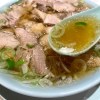 We try out “Chan Ramen”, an underground type of ramen popular in the ramen community
We try out “Chan Ramen”, an underground type of ramen popular in the ramen community Kyoto’s 100 Demons yokai monster parade returns!
Kyoto’s 100 Demons yokai monster parade returns! More foreign tourists than ever before in history visited Japan last month
More foreign tourists than ever before in history visited Japan last month Starbucks reopens at Shibuya Scramble Crossing with new look and design concept
Starbucks reopens at Shibuya Scramble Crossing with new look and design concept Hungry and on the go? Top 10 ranking of ekiben at Tokyo’s Shinagawa Station
Hungry and on the go? Top 10 ranking of ekiben at Tokyo’s Shinagawa Station Mister Donut ready to make hojicha dreams come true in latest collab with Kyoto tea merchant
Mister Donut ready to make hojicha dreams come true in latest collab with Kyoto tea merchant Disney princesses get official manga makeovers for Manga Princess Cafe opening in Tokyo
Disney princesses get official manga makeovers for Manga Princess Cafe opening in Tokyo Beautiful new Final Fantasy T-shirt collection on the way from Uniqlo【Photos】
Beautiful new Final Fantasy T-shirt collection on the way from Uniqlo【Photos】 Is the new Shinkansen Train Desk ticket worth it?
Is the new Shinkansen Train Desk ticket worth it? Foreign English teachers in Japan pick their favorite Japanese-language phrases【Survey】
Foreign English teachers in Japan pick their favorite Japanese-language phrases【Survey】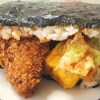 Japanese convenience store packs a whole bento into an onigiri rice ball
Japanese convenience store packs a whole bento into an onigiri rice ball Studio Ghibli releases Kiki’s Delivery Service chocolate cake pouches in Japan
Studio Ghibli releases Kiki’s Delivery Service chocolate cake pouches in Japan Japan’s bone-breaking and record-breaking roller coaster is permanently shutting down
Japan’s bone-breaking and record-breaking roller coaster is permanently shutting down New definition of “Japanese whiskey” goes into effect to prevent fakes from fooling overseas buyers
New definition of “Japanese whiskey” goes into effect to prevent fakes from fooling overseas buyers Our Japanese reporter visits Costco in the U.S., finds super American and very Japanese things
Our Japanese reporter visits Costco in the U.S., finds super American and very Japanese things Studio Ghibli unveils Mother’s Day gift set that captures the love in My Neighbour Totoro
Studio Ghibli unveils Mother’s Day gift set that captures the love in My Neighbour Totoro Foreign passenger shoves conductor on one of the last full runs for Japan’s Thunderbird train
Foreign passenger shoves conductor on one of the last full runs for Japan’s Thunderbird train Domino’s Japan now sells…pizza ears?
Domino’s Japan now sells…pizza ears? New Japanese KitKat flavour stars Sanrio characters, including Hello Kitty
New Japanese KitKat flavour stars Sanrio characters, including Hello Kitty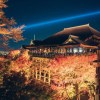 Kyoto creates new for-tourist buses to address overtourism with higher prices, faster rides
Kyoto creates new for-tourist buses to address overtourism with higher prices, faster rides Sales of Japan’s most convenient train ticket/shopping payment cards suspended indefinitely
Sales of Japan’s most convenient train ticket/shopping payment cards suspended indefinitely Sold-out Studio Ghibli desktop humidifiers are back so Totoro can help you through the dry season
Sold-out Studio Ghibli desktop humidifiers are back so Totoro can help you through the dry season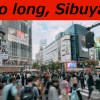 Japanese government to make first change to romanization spelling rules since the 1950s
Japanese government to make first change to romanization spelling rules since the 1950s Ghibli founders Toshio Suzuki and Hayao Miyazaki contribute to Japanese whisky Totoro label design
Ghibli founders Toshio Suzuki and Hayao Miyazaki contribute to Japanese whisky Totoro label design Doraemon found buried at sea as scene from 1993 anime becomes real life【Photos】
Doraemon found buried at sea as scene from 1993 anime becomes real life【Photos】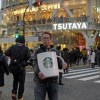 Tokyo’s most famous Starbucks is closed
Tokyo’s most famous Starbucks is closed One Piece characters’ nationalities revealed, but fans have mixed opinions
One Piece characters’ nationalities revealed, but fans have mixed opinions We asked a Uniqlo employee what four things we should buy and their suggestions didn’t disappoint
We asked a Uniqlo employee what four things we should buy and their suggestions didn’t disappoint Princesses, fruits, and blacksmiths: Study reveals the 30 most unusual family names in Japan
Princesses, fruits, and blacksmiths: Study reveals the 30 most unusual family names in Japan The top 10 hot springs Japanese travelers want to visit this fall
The top 10 hot springs Japanese travelers want to visit this fall Soak in a secret Japanese onsen hot spring…in a dilapidated old building
Soak in a secret Japanese onsen hot spring…in a dilapidated old building Studio Ghibli meals from the world of Japanese anime look absolutely delicious in real-life【Pics】
Studio Ghibli meals from the world of Japanese anime look absolutely delicious in real-life【Pics】 These creative, fanciful post boxes from Japan will delight you in so many ways【Photos】
These creative, fanciful post boxes from Japan will delight you in so many ways【Photos】 Hanao Shoes: Dress like a modern-day geisha with new line of geta sneakers from Kyoto
Hanao Shoes: Dress like a modern-day geisha with new line of geta sneakers from Kyoto Japan’s ‘agri-tech’ farming revolution
Japan’s ‘agri-tech’ farming revolution Japanese town suffers population decline, turns its local elementary school into an aquarium
Japanese town suffers population decline, turns its local elementary school into an aquarium Coffee in an ice cream cone, the perfect treat we never knew we wanted available at Tokyo cafe
Coffee in an ice cream cone, the perfect treat we never knew we wanted available at Tokyo cafe You need to follow this Instagram account if you are learning Japanese
You need to follow this Instagram account if you are learning Japanese Daughter of Japanese idol and former SMAP star Takuya Kimura makes her modelling debut in Japan
Daughter of Japanese idol and former SMAP star Takuya Kimura makes her modelling debut in Japan Indonesian community paints the town red…orange, yellow, green, blue and purple【Photos】
Indonesian community paints the town red…orange, yellow, green, blue and purple【Photos】 Kyoto cafe with unfortunate name, gorgeous sandwiches keeps getting mistaken for e-commerce giant
Kyoto cafe with unfortunate name, gorgeous sandwiches keeps getting mistaken for e-commerce giant
Leave a Reply